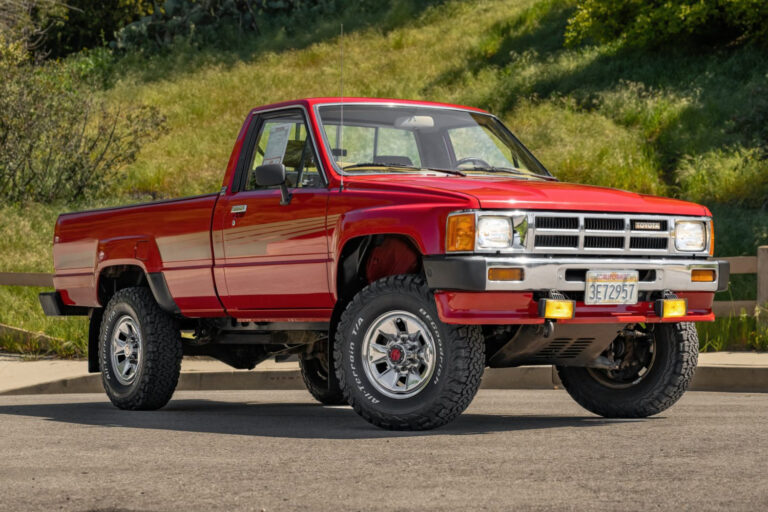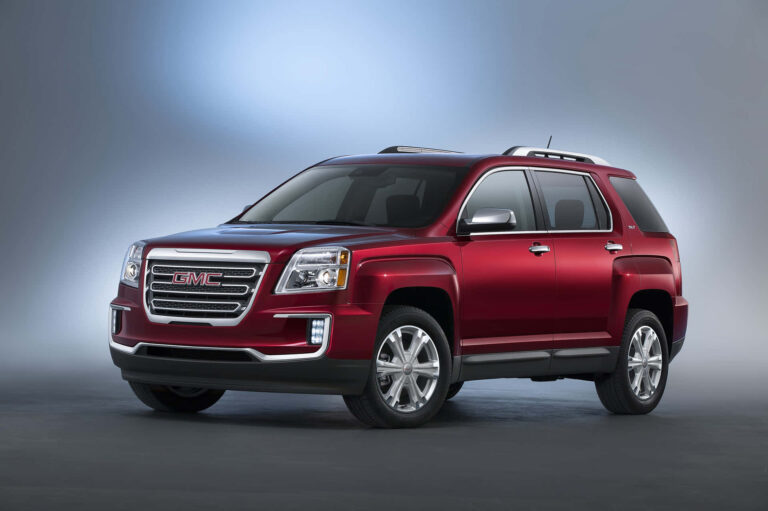Used Diesel 3500 Trucks For Sale: Your Ultimate Buyer’s Guide
Used Diesel 3500 Trucks For Sale: Your Ultimate Buyer’s Guide cars.truckstrend.com
For those who demand uncompromising power, exceptional towing capabilities, and robust durability, a used diesel 3500 truck stands as an undeniable workhorse. These heavy-duty beasts are the backbone of many industries, from construction and agriculture to commercial hauling and serious RV adventuring. Opting for a used model instead of a new one offers significant financial advantages, allowing buyers to acquire immense capability without the steep depreciation hit of a brand-new vehicle. This comprehensive guide will navigate the landscape of used diesel 3500 trucks for sale, providing you with the knowledge and tools to make an informed and confident purchase.
Why Choose a Used Diesel 3500 Truck? The Unbeatable Value Proposition
Used Diesel 3500 Trucks For Sale: Your Ultimate Buyer’s Guide
The decision to buy a used diesel 3500 truck isn’t just about saving money; it’s about smart investment in a proven asset. Here’s why they remain a top choice for discerning buyers:
- Significant Cost Savings: New 3500 diesel trucks can easily crest the $70,000-$90,000 mark, sometimes more. Used models, even just a few years old, shed a substantial portion of their initial value due to depreciation, offering similar capability at a fraction of the cost.
- Proven Reliability and Longevity: Diesel engines are engineered for high mileage and heavy loads. It’s not uncommon to find well-maintained diesel engines exceeding 300,000 to 500,000 miles. A used truck with 100,000 or 150,000 miles might still have hundreds of thousands of reliable miles left in it.
- Unmatched Towing and Hauling Capacity: When it comes to pulling heavy fifth-wheel trailers, large boats, or fully loaded goosenecks, a 3500 series truck is in a league of its own. Their robust frames, heavy-duty suspensions, and high-torque diesel engines are built for extreme demands.
- Availability and Selection: The used market offers a vast array of makes, models, trim levels, and configurations across different model years. This allows buyers to find a truck that perfectly matches their specific needs and budget, rather than being limited to current new inventory.
- Reduced Depreciation Impact: Since the initial depreciation has already occurred, your used 3500 truck will likely hold its value better over time compared to a new one, making it a more stable investment.

Key Manufacturers and Models to Consider
The heavy-duty truck segment is dominated by three major players, each offering powerful diesel options in their 3500 series:
- Ford Super Duty F-350 (Power Stroke Diesel): Known for its robust chassis and the powerful Power Stroke V8 diesel engine. Ford trucks offer high towing capacities and a comfortable, tech-forward interior, especially in newer generations. The 6.7L Power Stroke (2011-present) is generally considered a strong, reliable engine, a significant improvement over earlier generations.
- Ram Heavy Duty 3500 (Cummins Diesel): Ram trucks are synonymous with the legendary Cummins inline-six diesel engine. The Cummins is renowned for its durability, torque, and relatively simple, robust design. Ram trucks often feature luxurious interiors and innovative features, appealing to those who want capability without sacrificing comfort.
- Chevrolet Silverado 3500HD / GMC Sierra 3500HD (Duramax Diesel): GM’s heavy-duty offerings, powered by the Duramax V8 diesel, are known for their smooth power delivery, quiet operation, and strong acceleration. Paired with the Allison transmission, they offer a refined driving experience while still providing class-leading towing and hauling.
Each brand has its loyal following, and while specific engine generations may have known quirks, all three offer exceptional performance when properly maintained.
What to Look For When Buying Used: Your Essential Inspection Checklist
Purchasing a used diesel 3500 truck requires a meticulous approach. These are complex machines, and a thorough inspection can save you from costly surprises down the road.
- Review Maintenance Records: This is paramount for a diesel. Look for consistent oil changes with the correct diesel-spec oil, fuel filter replacements, transmission services, and documented repairs. A lack of records is a major red flag.
- Engine Inspection (Cold Start & Warm):
- Cold Start: Listen for excessive cranking, rough idle, or unusual noises (knocks, clatters, squeals). Blue smoke (burning oil) or white smoke (unburnt fuel/coolant) on start-up is a concern.
- Warm Engine: Check for steady idle, smooth acceleration, and no excessive black smoke under load. Look for oil leaks, coolant leaks, and fuel leaks around the engine bay. Check the turbo for excessive shaft play (wiggle the compressor wheel).
- Blow-by: Remove the oil fill cap while the engine is running. Excessive pressure/smoke coming out indicates worn piston rings or other internal issues. A small amount is normal.
- Transmission & Drivetrain:
- Fluid Check: On an automatic, check the transmission fluid level and color (should be reddish, not dark brown or burnt).
- Test Drive: Ensure smooth, timely shifts without slipping or harsh jerks. Test 4×4 engagement (if applicable) in both high and low range. Listen for clunks or grinding from differentials or driveshafts.
- Suspension & Steering:
- Look for worn components like ball joints, tie rods, and bushings (especially on the front end of independent front suspension trucks).
- Check for sagging in the rear, which could indicate overloaded use.
- Listen for clunks or squeaks over bumps during the test drive.
- Brakes & Tires:
- Check brake pad thickness and rotor condition. Test for pulsation during braking.
- Inspect tire tread depth and even wear. Uneven wear can indicate alignment issues or worn suspension components. For dually trucks, ensure all rear tires match and are properly inflated.
- Frame & Body:
- Inspect the frame for rust, especially around welds and mounting points. Look for any signs of bending, cracks, or previous accident damage (poor paint match, misaligned panels).
- Check for rust on body panels, rocker panels, and cab corners.
- Electrical & Interior:
- Test all lights, gauges, windows, locks, HVAC (AC and heat), and infotainment systems.
- Check for warning lights on the dashboard.
- Examine the interior for excessive wear, tears, or strong odors (smoke, mildew).
- Pre-Purchase Inspection (PPI): Crucially, have a trusted, independent diesel mechanic perform a comprehensive PPI. They can identify issues you might miss and often have specialized diagnostic tools to check engine parameters and codes.
Understanding Mileage and Lifespan for Diesel Engines
Unlike gasoline engines, high mileage on a diesel truck isn’t necessarily a deterrent. A diesel engine with 200,000 miles that has been consistently maintained, used for highway driving, and regularly serviced is often a better buy than one with 100,000 miles that has been neglected or primarily used for short-trip city driving.
- Highway vs. City Miles: Highway miles (consistent speed, minimal idling) are generally easier on a diesel engine than city miles (frequent stops, starts, idling, lower operating temperatures).
- Maintenance is Key: The lifespan of a diesel engine is directly correlated with its maintenance history. Regular oil changes, fuel filter replacements, and attention to emissions systems are critical.
- What’s "High Mileage"?: For a diesel, 150,000-200,000 miles is often considered "mid-life," not "high mileage." Many diesel owners expect 300,000 to 500,000 miles out of their engines.
Common Issues and Preventative Maintenance for Used Diesel 3500s
While robust, diesel trucks do have specific components that require attention or can be prone to issues:
- Emissions Systems (DPF, EGR, DEF): For trucks built after 2007, these systems (Diesel Particulate Filter, Exhaust Gas Recirculation, Diesel Exhaust Fluid) are complex and can be costly to repair if they fail. Clogging or sensor issues are common.
- Fuel System: Injectors, high-pressure fuel pumps (like the CP4 pump on some Ford and GM models), and fuel filters can be problematic. Using clean, quality fuel and regular filter changes are vital.
- Turbocharger: Boost leaks, worn bearings, or sticking vanes can occur. Listen for unusual whistling or surging sounds.
- Cooling System: Water pumps, radiators, and hoses can fail, leading to overheating.
- Rust: Especially in areas that use road salt, rust can be a significant issue on the frame, body, and brake lines.
- Preventative Maintenance: Adhere to manufacturer-recommended service intervals, use high-quality diesel-specific fluids and filters, and address any warning lights or unusual noises promptly.
Financing and Insuring Your Used Diesel 3500
- Financing: Lenders may have stricter requirements for older, higher-mileage vehicles. Be prepared for potentially higher interest rates or shorter loan terms. A strong credit score will help.
- Insurance: Heavy-duty trucks, especially diesels, can have higher insurance premiums due to their replacement cost and potential for greater damage in accidents. Get insurance quotes before committing to a purchase.
Practical Advice and Actionable Insights
- Set a Realistic Budget: Don’t just consider the purchase price. Factor in potential repair costs, higher fuel costs (though better MPG than gas 3500s), insurance, and maintenance.
- Don’t Rush: Take your time researching, inspecting, and test driving multiple vehicles. The right truck is worth waiting for.
- Negotiate: Always be prepared to negotiate the price, especially after a PPI reveals minor issues.
- Understand Your Needs: Be honest about what you’ll use the truck for. Do you need a dually? What specific towing capacity do you require? This will narrow your search.
Used Diesel 3500 Trucks For Sale: Representative Price Guide (USD)
Please note: Prices are highly variable based on year, mileage, condition, trim level, 2WD/4WD, and geographic location. This table provides broad ranges for general guidance.
| Year Range | Make/Model (Engine) | Typical Mileage Range | Price Range (USD) | Key Considerations |
|---|
Used Diesel 3500 Trucks For Sale: Your Ultimate Buyer’s Guide
In the realm of heavy-duty transportation, few vehicles command as much respect and capability as the diesel 3500 truck. These formidable machines are the workhorses of countless industries, from construction and agriculture to commercial hauling and serious recreational vehicle adventuring. For individuals and businesses seeking uncompromising power, exceptional towing capacities, and robust durability, a used diesel 3500 truck presents an incredibly compelling proposition. Opting for a pre-owned model instead of a brand-new one offers significant financial advantages, allowing buyers to acquire immense capability without the steep initial depreciation hit of a new vehicle. This comprehensive guide will navigate the intricate landscape of used diesel 3500 trucks for sale, equipping you with the essential knowledge and actionable insights to make an informed, confident, and ultimately successful purchase.
The Undeniable Value Proposition: Why Choose a Used Diesel 3500?
The decision to invest in a used diesel 3500 truck is more than just about saving money; it’s a strategic move towards acquiring a proven, durable asset. Here are the core reasons why these trucks remain a top choice for discerning buyers:
- Significant Cost Savings: Brand new 3500 series diesel trucks, with their advanced technology and immense capabilities, can easily command prices upwards of $70,000 to $90,000, and often much more for higher trims. Used models, even those just a few years old, absorb a substantial portion of their initial value depreciation, offering comparable performance and utility at a fraction of the original cost.
- Proven Reliability and Extended Longevity: Diesel engines are meticulously engineered for high mileage, heavy loads, and prolonged operation. It is not uncommon to find well-maintained diesel engines that have reliably surpassed 300,000 to 500,000 miles. Consequently, a used truck showing 100,000 or 150,000 miles on its odometer might still have hundreds of thousands of dependable miles left to deliver, making them a long-term investment.
- Unmatched Towing and Hauling Capacity: When the task involves pulling massive fifth-wheel trailers, large boats, multi-car haulers, or fully loaded gooseneck trailers, a 3500 series truck operates in a league of its own. Their robust, often dually (dual rear wheel) configurations, heavy-duty frames, reinforced suspensions, and high-torque diesel engines are purpose-built to handle the most extreme demands with stability and control.
- Wider Availability and Diverse Selection: The used truck market offers a vast inventory spanning various makes, models, trim levels, configurations, and model years. This extensive selection empowers buyers to find a truck that precisely matches their specific operational needs, aesthetic preferences, and budgetary constraints, without being limited to the current year’s new vehicle offerings.
- Reduced Future Depreciation Impact: Since the most significant period of depreciation typically occurs within the first few years of a vehicle’s life, your used 3500 truck will likely retain its value more consistently over your period of ownership compared to a new purchase, solidifying its status as a more stable financial asset.
Key Manufacturers and Notable Models to Consider
The heavy-duty truck segment is predominantly shaped by three automotive giants, each presenting powerful diesel engine options within their 3500 series lineup:
- Ford Super Duty F-350 (Power Stroke Diesel): Ford’s F-350 is celebrated for its rugged chassis, impressive towing statistics, and the formidable Power Stroke V8 diesel engine. Modern Ford Super Duty trucks are known for their high towing capacities and increasingly sophisticated, tech-rich interiors. The 6.7L Power Stroke engine (introduced in 2011) is widely regarded as a strong, reliable, and highly capable powerplant, representing a significant evolution from its predecessors.
- Ram Heavy Duty 3500 (Cummins Diesel): Ram trucks have become virtually synonymous with the legendary Cummins inline-six diesel engine. The Cummins is globally revered for its unparalleled durability, immense torque output, and a reputation for being a relatively straightforward and robust design. Ram Heavy Duty trucks also frequently feature luxurious, well-appointed interiors and innovative creature comforts, appealing to buyers who desire top-tier capability without compromising on refinement or ride quality.
- Chevrolet Silverado 3500HD / GMC Sierra 3500HD (Duramax Diesel): General Motors’ heavy-duty offerings, the Silverado 3500HD and Sierra 3500HD, powered by the Duramax V8 diesel, are distinguished by their exceptionally smooth power delivery, remarkably quiet operation, and strong, responsive acceleration. When paired with the highly regarded Allison automatic transmission, these trucks offer a refined and confident driving experience while consistently delivering class-leading towing and hauling capabilities.
Each of these brands commands a fiercely loyal customer base, and while specific engine generations or model years may have their known characteristics or quirks, all three manufacturers deliver exceptional performance and reliability when their vehicles are properly maintained.
The Prudent Buyer’s Guide: What to Look For When Buying Used
Acquiring a used diesel 3500 truck demands a comprehensive and meticulous inspection process. These are complex, high-performance machines, and a thorough evaluation can prevent significant and costly surprises down the road.
- Examine Comprehensive Maintenance Records: For any diesel truck, a verifiable service history is arguably the most critical piece of documentation. Look for evidence of consistent oil changes using the correct diesel-specific engine oil, timely fuel filter replacements, regular transmission fluid services, and documented repairs. A complete absence of maintenance records should be considered a significant red flag.
- Detailed Engine Inspection (Cold Start and Warm Operation):
- Cold Start Protocol: Initiate the engine from a cold state. Listen attentively for any excessive cranking, a prolonged or rough idle, or unusual metallic noises (e.g., knocks, clatters, squeals). Observe the exhaust for excessive blue smoke (indicating oil burning) or white smoke (suggesting unburnt fuel or coolant) upon startup. A puff of white smoke on a cold diesel start is often normal, but persistent or thick smoke is problematic.
- Warm Engine Assessment: Once the engine reaches operating temperature, check for a steady and consistent idle, smooth and linear acceleration, and an absence of excessive black smoke under load (which could point to fuel system issues). Visually inspect the engine bay for any signs of oil leaks, coolant leaks, or fuel leaks around fittings and lines. If possible, gently wiggle the turbocharger’s compressor wheel to check for excessive shaft play, which indicates turbo wear.
- Blow-by Test: With the engine running and warm, carefully remove the oil fill cap. Observe the amount of pressure or smoke emanating from the oil fill tube. While a small amount of vapor or gentle pulsation is normal, excessive pressure or thick smoke (known as "blow-by") can indicate significant internal engine wear, such as compromised piston rings.
- **Transmission




